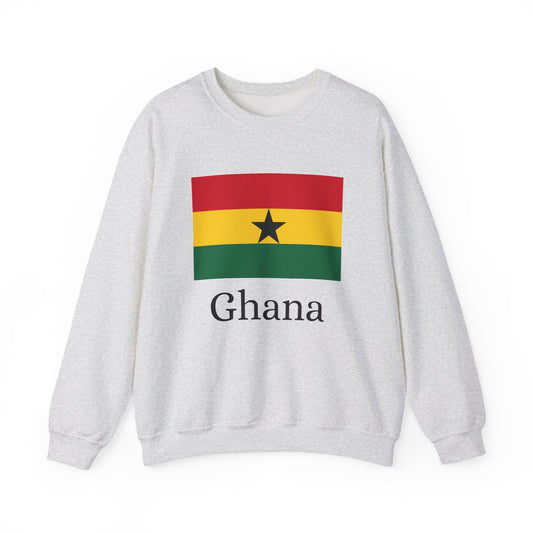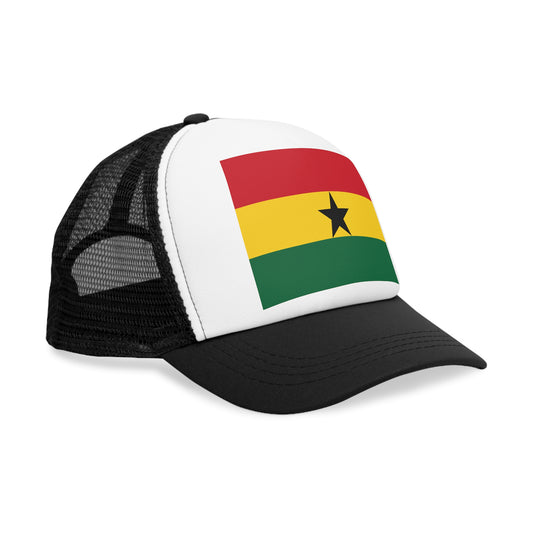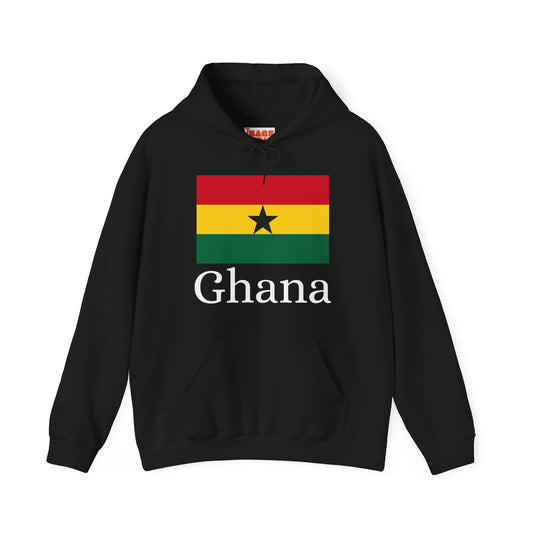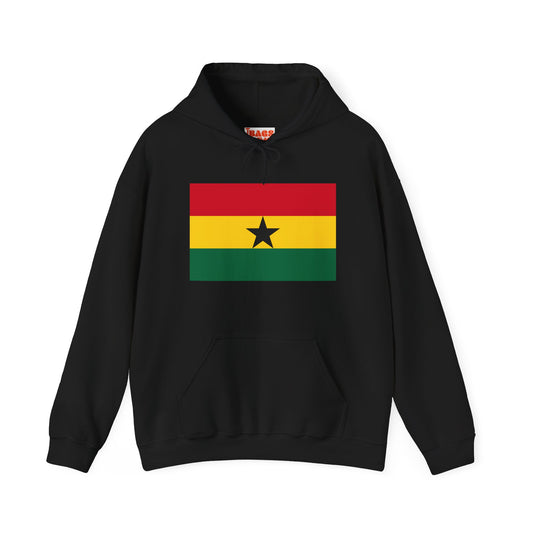-
Ghana Pillow
Regular price $22.65 USDRegular priceUnit price / per -
Ghana Backpack
Regular price $59.79 USDRegular priceUnit price / per -
Ghana Leather Patch Hat
Regular price $18.85 USDRegular priceUnit price / per -
Ghana Sweatshirt
Regular price $34.15 USDRegular priceUnit price / per -
Ghana Flag Sweatshirt
Regular price $34.15 USDRegular priceUnit price / per -
Ghana Trucker Cap
Regular price $14.90 USDRegular priceUnit price / per -
Ghana Hoodies
Regular price $34.40 USDRegular priceUnit price / per -
Ghana T-shirts
Regular price $22.79 USDRegular priceUnit price / per -
Ghana Flag on Hoodie
Regular price $34.40 USDRegular priceUnit price / per -
Ghana Flag on T-shirt
Regular price $22.79 USDRegular priceUnit price / per
Collection: Ghana
The Ghana flag symbolizes pride and identity for the people of Ghana. Its vibrant colors and unique design hold deep historical and cultural significance. We will delve beyond the flag's surface to explore its protocol, lesser-known facts, and the symbolism behind its design.
Overview of the Ghana Flag's Design and Colors

The flag of Ghana showcases a striking and symbolic palette consisting of horizontal stripes in red, yellow, and green. At the heart of the flag lies a solitary black star. Each color has been chosen to convey significant aspects of Ghana's identity and heritage. The red stripe evokes the courage and sacrifice of those who fought for the nation's independence, shedding their blood to pursue freedom.
The central stripe, yellow, illuminates Ghana's wealth, particularly highlighting its abundant natural resources and mineral riches. The green stripe depicts the lush landscapes and dense forests that characterize much of the country, symbolizing growth and hope for the future. Anchoring these colors, the black star is a beacon of African liberation and unity, guiding the continent toward a shared destiny. This thoughtful composition reflects the nation's past struggles, triumphs, and ongoing journey toward progress and unity.
Historical Context of the Ghana Flag

The journey to the Ghana flag's current design began notably on March 6, 1957, marking Ghana's emergence as the first sub-Saharan African country to declare independence from colonial rule. This historic moment was emblematically captured in the adoption of a new national flag, representing a definitive break from the colonial past and a bold step toward a self-determined future. The flag, as initially introduced, featured the Pan-African colors inspired by the flag of Ethiopia, a country that successfully resisted colonization.
The concept of the flag was the vision of Theodosia Okoh, whose design was selected to encapsulate the spirit and aspirations of the newly independent nation. Its adoption was a matter of national pride and a significant symbol of the broader African liberation movement, setting a precedent for other African nations on their path to independence.
In the years following independence, the flag underwent a brief transformation when Ghana formed a union with Guinea and Mali. During this period, the flag was altered to include two black stars, signifying the unity between the African countries. However, this version was short-lived, and the original design with a single black star was reinstated, reinforcing its status as a powerful symbol of Ghana's sovereignty and singular identity within the global community.
Symbolism Embedded in the Ghana Flag
At the core of the Ghana flag's design lies a rich tapestry of meanings, each color and symbol meticulously chosen to represent the nation's ideals and historical journey. The red stripe serves as a poignant reminder of the blood shed by those who fought valiantly for Ghana's independence, underscoring the sacrifices made to break free from colonial rule. The middle yellow stripe shines a light on Ghana's mineral wealth and the promise of a prosperous future, symbolizing the country's natural riches and potential for growth.
The green stripe captures the essence of the Ghanaian landscape, from its fertile lands to its verdant forests, reflecting a commitment to environmental preservation and agricultural development. At the flag's heart, the solitary black star is a powerful emblem of African emancipation and unity. It heralds Ghana as a beacon for African nations striving for sovereignty and self-determination, embodying the hope and resilience that define the continent's spirit. Together, these elements weave a narrative of struggle, liberation, and optimism, forging a visual identity that resonates with Ghanaians and Africans alike.
Current Relevance of the Ghana Flag
Today, the Ghana flag continues to be a central emblem of national pride and is prominently featured in a variety of contexts, from government buildings and educational institutions to sports events and international gatherings. Its presence is especially felt during significant national holidays like Independence Day and Republic Day, where it symbolizes unity and the collective memory of Ghana's struggle for sovereignty. In recent years, the flag has transcended beyond its traditional ceremonial use, becoming a symbol embraced by the youth and diaspora as an expression of cultural identity and pride on global platforms, including social media and international festivals.
Despite its revered status, the flag has sparked conversations and debates among citizens and scholars about its contemporary relevance and representation of Ghana's evolving identity and global stature. These discussions often revolve around the idea of integrating elements that reflect the nation's current achievements, challenges, and aspirations while preserving the legacy embedded in the original design. Through these ongoing dialogues, the Ghana flag remains a living symbol, continually reflecting the nation's past, present, and future aspirations.
Additional Facts and Protocols Concerning the Ghana Flag
In Ghana, the national flag is treated with a deep sense of respect and honor, reflecting its significance as a symbol of the nation's sovereignty and history. The flag must always be displayed in a prominent position, above any other flag, to signify Ghana's independence and pride. Strict guidelines ensure that the flag is never displayed in a manner that could be considered disrespectful. This includes ensuring that it does not drape on the ground, become entangled, or used inappropriately for commercial or decorative purposes that detract from its dignity.
When the Ghana flag is displayed alongside other flags, it takes a position of honor, placed to the right of all other national flags, with its staff in front when in a row. During official ceremonies, the flag must be hoisted briskly at sunrise and lowered slowly at sunset, in a dignified manner, often accompanied by the solemn sound of the national anthem or a bugle call, signaling respect and reverence for the nation's emblem.
In educational institutions and public buildings, the flag is prominently displayed to instill a sense of national pride and unity among citizens. It is a common sight at national celebrations, where it symbolizes the country's achievements and aspirations. The protocols surrounding the Ghana flag not only guide its use in daily life but also reinforce the shared values and heritage of the Ghanaian people, reminding them of their collective identity and the sacrifices made for their country's freedom and future.






















